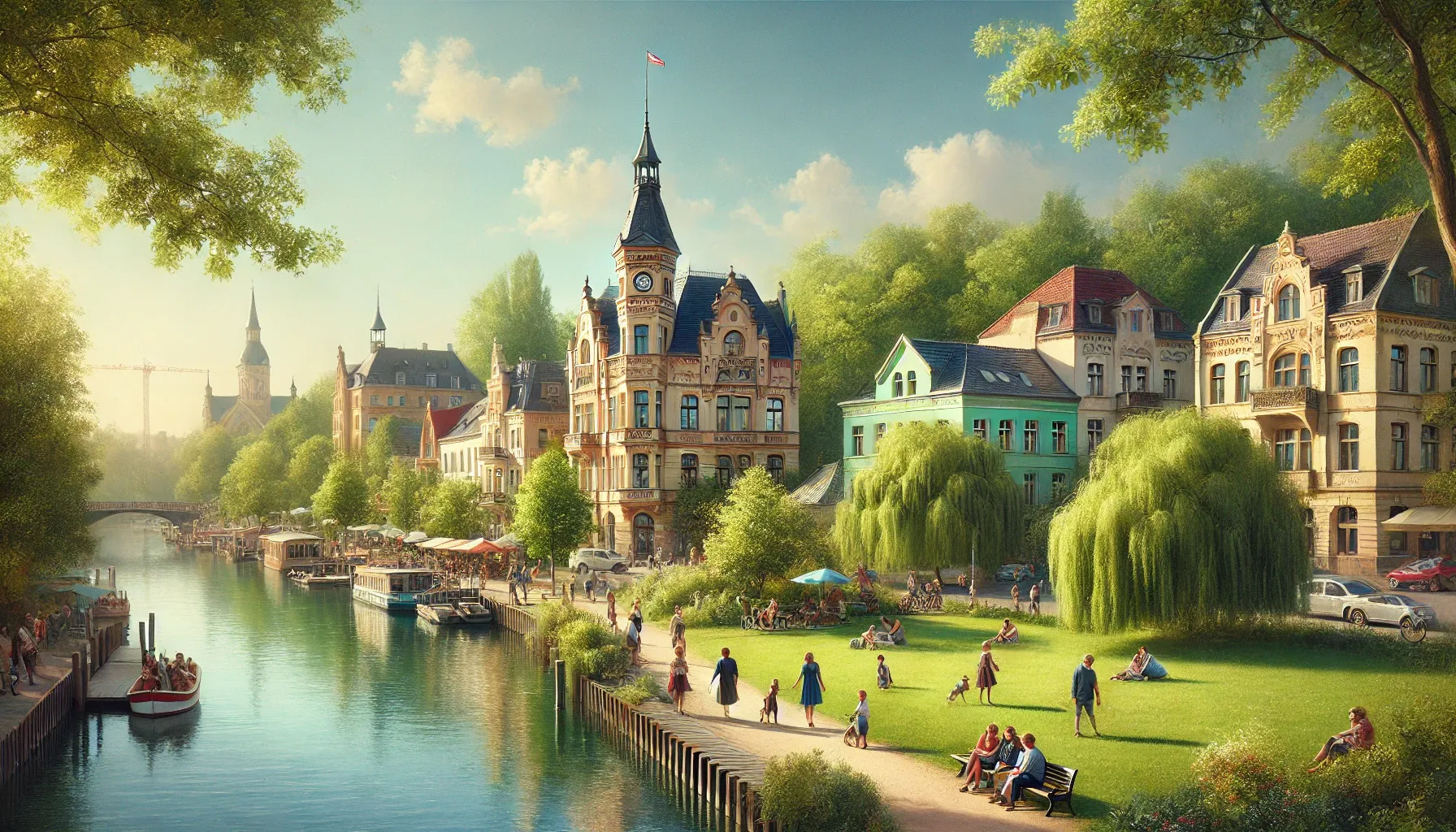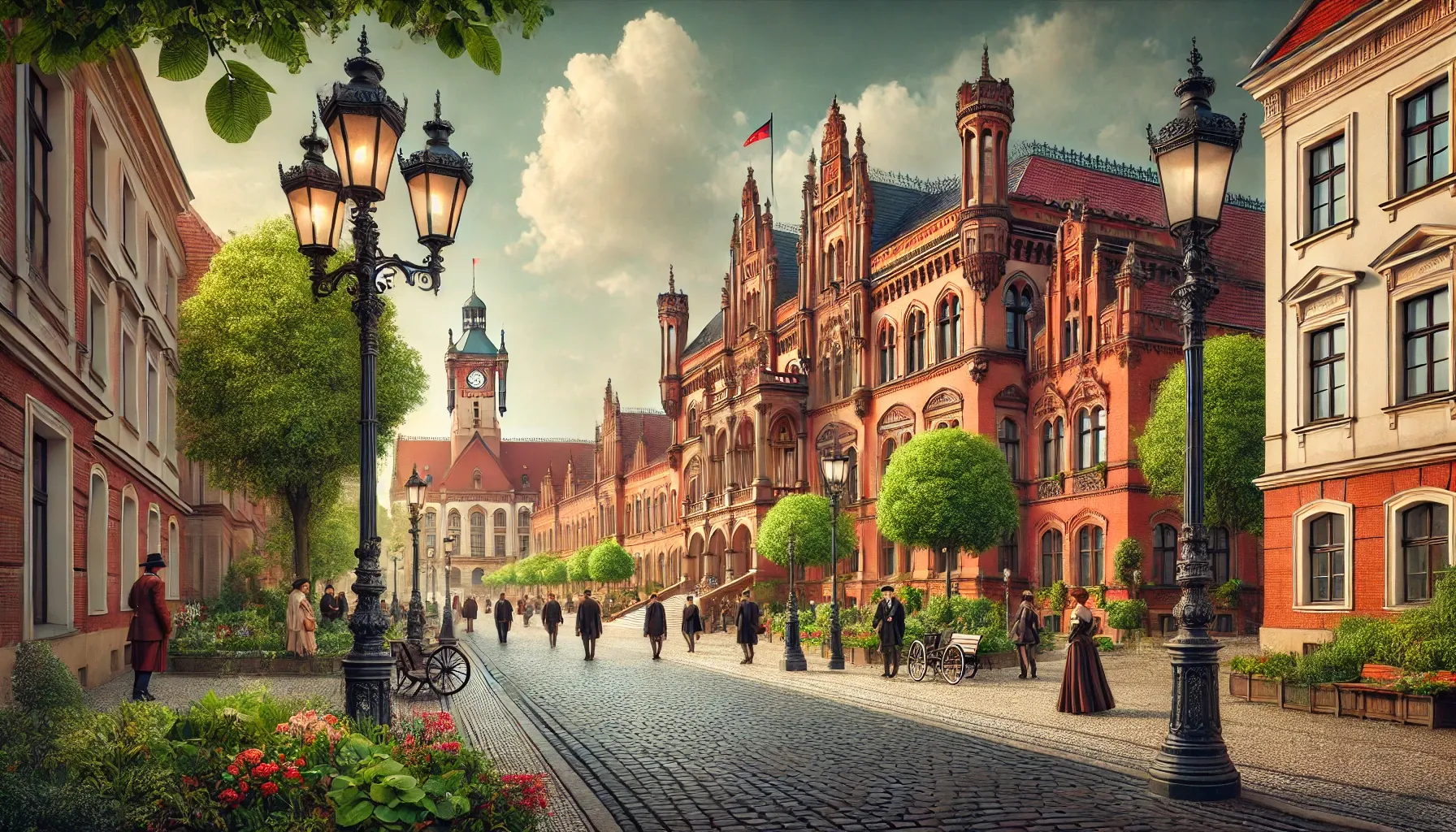What is Köpenick and why is it called the green lungs of Berlin?

- Köpenick: a picturesque corner of Berlin with a rich history and nature
- Köpenick: historical heritage and cultural traditions
- How the shoemaker became a legend of Köpenick? The unusual story of the town hall.
Köpenick: A Picturesque District of Berlin
Köpenick is a picturesque corner on the southeast side of Berlin, located at the confluence of two rivers: the Spree and the Dahme. Locals enthusiastically claim that it is here that the Dahme River meets the Spree, highlighting the unique atmosphere of this place. Köpenick serves as the "green lungs" of the German capital, offering the opportunity to enjoy magnificent nature.
- More than 70% of the area in this district is occupied by forests, parks, and water bodies.
- The largest body of water here is Lake Müggelsee.
- The vast Köpenick Forest and the highest hill in the district, Müggelberg, are also located in this area.
Calmness and Nature
This district, being the largest in Berlin, stands out for its low population density. The tranquil lifestyle creates a cozy atmosphere where the noise of the big city feels distant and unnecessary. Strolling through the ancient streets of Köpenick, you will sense the spirit of a more dynamic life.
Köpenick Palace
One of the main symbols of this region isKöpenick Palacelocated on an island that has become a center of cultural life and attracts the attention of both tourists and locals.
Walks and Atmosphere
During leisurely walks along the Köpenick waterfront, you will be greeted by a captivating view of the old town hall, cozy cafes, and elegant sculptures. This area is particularly favored by the affluent middle class, while families with children choose it for its tranquil atmosphere and proximity to natural landscapes.
Transport and Housing Market
Another important advantage is the convenient transportation connection to the center of Berlin, making it easy to reach by both car and public transport. In 2022, the price per square meter in Köpenick on the primary market was about3,800 euros...which is significantly cheaper than in other areas of the capital. In the most expensive properties, the price can reach...7,150 eurosper square meter.
You could rent a place in this area in 2022 for9.5 eurosper square meter.
Historical Heritage
Köpenick, like Spandau and Cologne, is considered one of the oldest settlements in modern Berlin. Historically, Köpenick began its existence as a Slavic community. In the 8th century, the Slavic tribe of Sprevian settled here and established their fortress. The name "Köpenick" has Slavic roots and can be translated to mean "island area."
Capture and Reconstruction
InIn the year 1245The fortress of Köpenick was captured by the Brandenburg margraviate as a result of a prolonged war with the Meissen margraviate. From that moment on, Köpenick became an integral part of Brandenburg.in the year 1558Elector Joachim II Hector ordered the construction of a hunting castle in Renaissance style on the site of the old fortress.
Later, inin the year 1677Elector Frederick III of Brandenburg, who became King of Prussia under the name Frederick I, initiated the reconstruction of the castle, which later became famous.Köpenick PalaceThus, Köpenick became one of the residences of the Prussian monarchs, which added historical significance and appeal to this place.
Historical information about Köpenick
In 1920, the historic district of Köpenick became part of Berlin and was granted district status. Then, during an administrative reform carried out in 2001, it merged with the Treptow district, resulting in the formation of a new, larger administrative district called Treptow-Köpenick.
Famous resident of Köpenick
It should be noted that in the southern part of Köpenick, in an area called Wendenschloss, the famous Marshal Georgy Zhukov lived in 1945. This historical detail is confirmed by a special memorial plaque installed on one of the buildings.
Köpenick Castle
Köpenick Castle, or Schloss Köpenick, is located in a picturesque part of the old town on an island that locals affectionately call the "cradle of Köpenick." The island is connected to the mainland by a bridge. In the 15th century, members of the Hohenzollern dynasty began to settle here, ruling Germany until the end of World War I.
The construction of this majestic palace began on the orders of Elector Frederick III of Brandenburg, who became the Prussian King Frederick I. The initial work started in 1677 and was carried out under the guidance of the Dutch architect Rutger van Langervelt. The completion of the northern pavilion took place between 1679 and 1682, after which the Prussian architect Johann Arnold Nering added a service wing and a church to the palace in 1684. It was in this palace that Frederick spent time with his first wife, Elizabeth Henrietta of Hesse-Cassel.
Köpenick during the war
During World War II, Köpenick Castle avoided significant damage from air raids. Restoration work began only in 1994, and by 2004, the landmark reopened its doors to the public.
Visitors to the castle have the opportunity to:
- Get to know the lifestyle of the royal family.
- To see historical furniture from different eras.
- To admire collections of gold and silver items, porcelain tableware, and archaeological artifacts.
In Köpenick, there are also exhibitions of contemporary art and classical music concerts.
9 October 2024
9 October 2024
29 September
The traditional festival "Köpenick Summer"
Every year, the castle square becomes a gathering place for thousands of people from all over Brandenburg, eager to participate in the traditional festival "Köpenick Summer." As part of this event, various activities are organized on the island:
- Concerts.
- Fashion shows.
- Festivals.
Köpenick Town Hall
The Köpenick Town Hall, built in 1905, replaced the previous 18th-century building. This beautiful red-brick structure, standing 54 meters tall, is located in the center of the old town, surrounded by cozy streets, a church, and, of course, Köpenick Castle.
This town hall has become an important element of city life and continues to attract visitors with its architectural style and historical significance.

An unusual story of the town hall in Köpenick
The new town hall in Köpenick gained worldwide fame shortly after its opening. This interest was sparked by the astonishing story of the shoemaker Friedrich Wilhelm Voigt, who, disguised as a captain, kidnapped Mayor Georg Langerhans and seized the city budget. This incident is...“The Captain from Köpenick”became part of the German cultural tradition and is familiar to many people.
Expansion of the town hall building
The town hall building underwent significant changes from 1927 to 1949, with its area being substantially increased. Remarkably, during World War II, the town hall remained almost untouched, avoiding destruction from air raids. Later, the German authorities recognized this building as a cultural heritage site. The facade stands out with unique features of Brandenburg brick Gothic, and the coat of arms of Köpenick majestically rises above the main entrance. In addition, the magnificent staircase and the large hall with the coat of arms make this iconic structure one of the most attractive places in Berlin.
Monument to Friedrich Wilhelm Voigt
In front of the town hall, a monument to Voigt was erected, who, as it turned out, was not a real captain at all, but a simple shoemaker from East Prussia, who became famous for his fraudulent activities. He went down in history as the man who, dressed in military uniform, seized the town hall and stole the local treasury.
The mysterious biography of Foigt
Foygt had eight prison sentences behind him for various crimes, including theft and forgery. In 1906, after being released from prison, he conceived an unusual scam. First, he acquired a captain's uniform and headed to Köpenick. On the way, he encountered two units of guards and took command, confidently stating that they were to carry out a "secret order" from the Kaiser.
Successful capture of the town hall
His deception was so convincing that the soldiers immediately obeyed his orders and took over the town hall, arresting the mayor and the chief treasurer for allegedly embezzling budget funds. The employees working in the town hall also believed they were dealing with a real captain carrying out orders from above. While Voigt was collecting the treasury, he discreetly left the building and headed to the train station.
Conclusion and consequences
Ten days later, Foigt was caught, but to the surprise of many, he received only four years in prison. It is said that Kaiser Wilhelm II reacted to the incident with a sarcastic joke: "This is what discipline looks like. No one in the world can surpass us!" Very soon, the fraudster was pardoned by the Kaiser and was released.
The cult status of Foygt
Friedrich Wilhelm Voigt has become a true cult figure in Köpenick. In his honor, the following have been named:
- schools
- hair salons
- cafe
- songs and stories
A musical about“The Captain from Köpenick”It is successfully taking place both in the local town hall and in the famous Berlin theater Admiralspalast.
Conclusion
Anyone who visits Köpenick can see why this area is rightly called the "green lungs of Berlin." The beautiful nature and the harmony between the city and the surrounding environment come together here, creating a unique atmosphere of tranquility and comfort.
I am impressed by how history and modernity intertwine in Köpenick, from its Slavic roots to the palace architectural masterpieces. Life in this corner of the capital flows at a calm and measured pace, which particularly attracts young families and those seeking solitude away from the hustle and bustle of the city.
Attractive features of Köpenick
- The waterfront with majestic views
- Attractive cafes
- Cultural events
- Availability of housing
Moreover, you look at the old town hall and admire the architecture that holds the history of many generations. This place has become an important cultural center, hosting exhibitions, concerts, and festivals that bring people together.
Why is Köpenick attractive for living?
I believe that Köpenick is not just a district, but a true living history that gains new colors every spring and summer, inviting more and more people to enjoy its charm and splendor.
Köpenick— it's not just a territory on the map, it's a whole world where memories of the past, the freshness of nature, and the warmth of the locals coexist. For me, this area has become a true discovery, a place where you can feel the spirit of Berlin in its most authentic form.
Comment
Popular Posts
9 October 2024
9940
9 October 2024
1485
29 September
377
Popular Offers

Subscribe to the newsletter from Hatamatata.com!
Subscribe to the newsletter from Hatamatata.com!
I agree to the processing of personal data and confidentiality rules of Hatamatata














